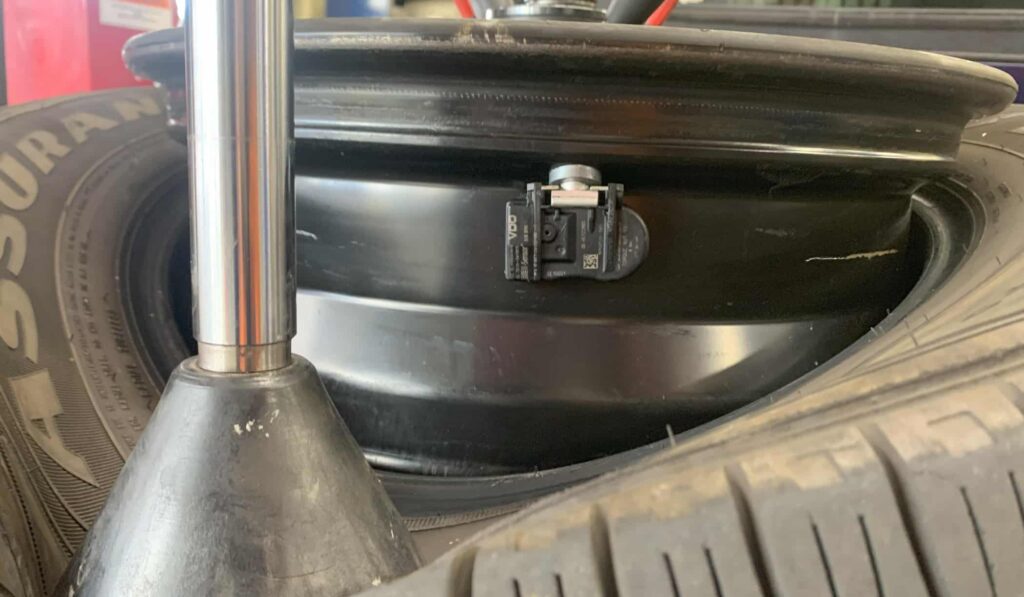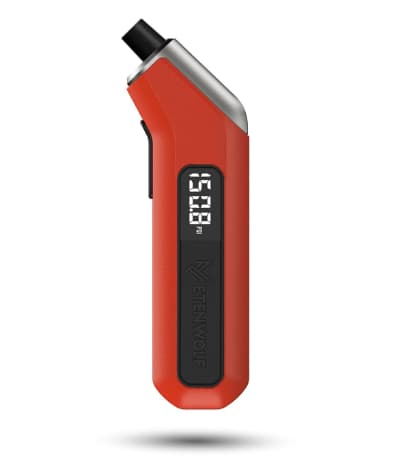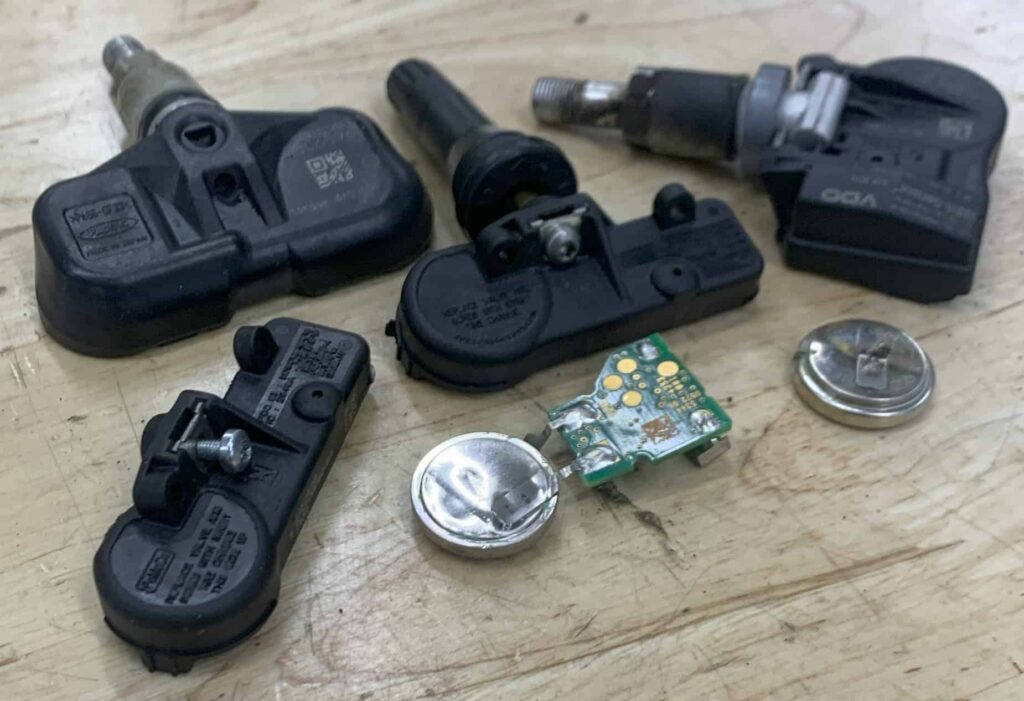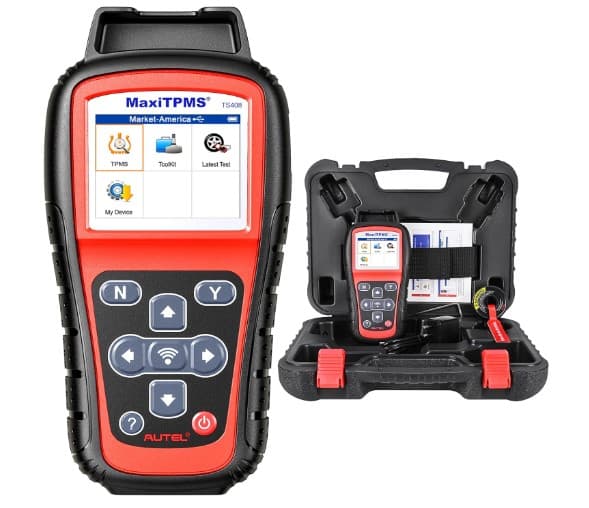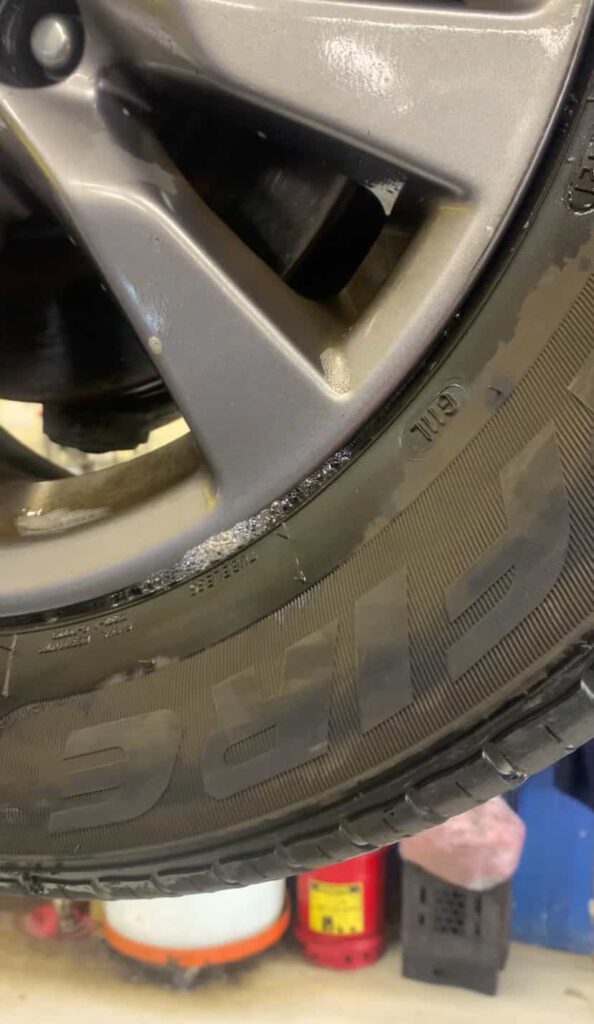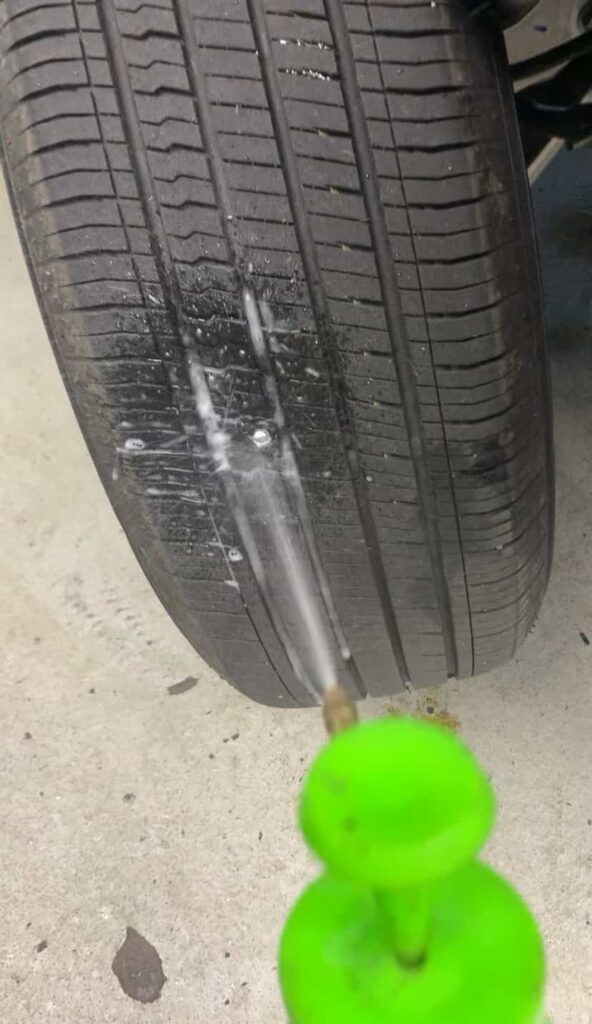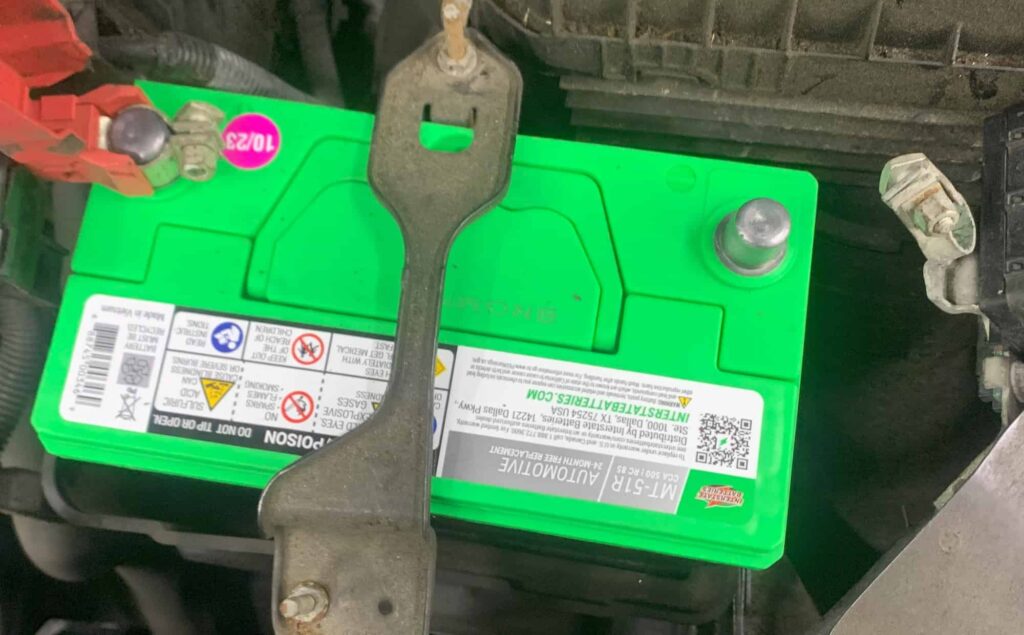Steps to Reset the Chevy Corvette TPMS
Adjust the pressure in all tires to the specified levels recommended for cold tires.
Drive in the Chevy Corvette for a minimum of 5 to 10 minutes, keeping your speed over 25 Mph.
Important: The Chevy Corvette lacks a feature to reset the tire pressure system with a dedicated button.
Steps to Relearn the Chevy Corvette TPMS Without a Tool
After any work has been completed on the Chevy Corvette tires, such as tire rotations, tire pressure sensor replacements or tire repair, the tire pressure sensors must be relearned. Relearning the tire pressure sensors teaches the Chevy Corvette ECM of the new tire positions. Execute these actions:
Inflate all tires to approximately 40 Psi.
Turn the ignition on while keeping the engine off.
Go to “Menu” on the dashboard, select “Vehicle Information,” then “Tire Pressure.”
Hold down the SET/CLR button (trip button) until prompted.
Agree to the “Are you sure you want to relearn?” query by selecting “Yes.”
Listen for the double horn beep indicating “TIRE LEARNING ACTIVE” on the display.
Starting at the driver’s side front tire, let air out from the tire until the horn beeps.
Move in sequence to the passenger front, passenger rear, and driver’s rear tire, waiting for a beep each time after releasing air from each tire.
After all tires have been deflated slightly and the horn has sounded for each, the Chevy Corvette relearning process is done.
Confirm this by viewing the current tire pressure display screen with the new tire positions.
Shut off the Chevy Corvette and correct the tire pressures to their normal levels.
Steps to Relearn the Chevy Corvette TPMS With a TPMS Tool
Bring each tire’s pressure up to about 40 Psi.
Use the steering wheel buttons to flip through display screens until you see the tire pressure readings.
Press and hold the trip reset button next to the display screen.
A confirmation message will pop up, “Are you sure that you want to relearn?”
Confirm by pressing the trip button by selecting “Yes“.
Listen for the horn to sound twice, and look for the “Tire Learning Active” message on the display.
Start with the front left tire, place the TPMS sensor relearn tool in front of the valve stem and press the trigger button until the horn beeps.
Proceed to perform this action on the front right, rear right, and rear left tires, maintaining that order.
Confirm the Chevy Corvette tire pressure sensor relearn process was successful by viewing the new tire positions on the tire pressure display screen.
After completion, ensure the Corvette tire pressures are adjusted to the recommended air pressure values.
2023 Chevy Corvette Tire Pressures
TIRE SIZE | FRONT PSI | REAR PSI |
245/35R19 | 30 | |
305/30R20 | 32 |
What is the Chevy Corvette TPMS?
The TPMS or tire pressure monitoring system in the Chevy Corvette serves as a critical safety tool by persistently monitoring the air pressure in each of the vehicle’s tires. It is composed of four tire pressure sensors (one embedded in each tire), a specialized TPMS receiver module, and is linked to the Corvette’s engine control module (ECM).
How Does the Chevy Corvette TPMS Work?
Monitoring Tire Pressure in Chevy Corvette: The Chevy Corvette features a tire pressure sensor within each of its tires, hidden from view beneath the tire. These sensors, located at the valve stem’s base, are miniature systems with a circuit board, a transmitter, and a battery, all encased in a plastic shell. They monitor the tire pressure and communicate this data to the TPMS receiver module of the vehicle. (If your Corvette has an option with a spare tire, the spare tire does not have a tire pressure sensor within it)
The TPMS Receiver Module’s Function: The TPMS receiver module in the Chevy Corvette is designed to receive and organize the data sent from the tire pressure sensors. It then sends this organized data to the car’s ECM.
Functionality of the Engine Control Module: The Chevy Corvette’s ECM is its central computer, overseeing various functions including the assessment of tire pressure. It compares real-time tire pressure data with the ideal pressure levels set by Chevrolet. If the pressure in any tire falls below the acceptable range, the ECM triggers a low tire pressure warning, a yellow exclamation mark on the dashboard and information display.
What to Do Right Away When Your Corvette's Tire Light Comes On
As the low tire pressure alert lights up on the dashboard of your Chevy Corvette, quickly seek a safe area to park. Once you’ve stopped safely, visually assess each tire and then manually verify the pressure using a tire gauge. Adjust the tire pressure to match the recommended specifications.
Common Causes for Activating the Chevy Corvette Tire Pressure Warning Light
Incorrect air pressure in tires
Missing TPMS sensors, notably in the spare tire
Failing or depleted batteries in any of the 4 TPMS sensors
Technical issues with the TPMS receiver module or ECM in the Chevy Corvette, including software errors
Electromagnetic interference from close by vehicles or devices
A drop in air temperature
Loading the car beyond its recommended weight limit
Usage of chains on tires
Excessive tinting the Corvette’s windows
Changes in road surface temperatures
Mismatched tire sizes
Damage to TPMS sensors during tire mounting
Not performing TPMS reset, relearn, or recalibration post tire replacement or rotation
Importance of Adjusting Chevy Corvette Tire Pressure in Cold Conditions
To ensure accuracy in tire pressure, make adjustments only when the tires are in a cold state, which is typically after not being driven for 3 hours or more. Keep in mind that the advised tire pressures for the Chevy Corvette applies to tires when they are cold.
Managing Air Pressure in Hot Tires to Prevent Overinflation
Inflating tires while they are still warm from use can cause the tires to become over filled with air. This is because tire pressure increases temporarily as the tire heats up, either from the friction of driving or ambient temperature rises.
Will an Altitude Change Cause the TPMS Light to Illuminate?
The pressure within tires can be influenced by a change in elevation. With every ascent of 1,000 feet, tire pressure is likely to rise by about 0.5 psi. As an example, a Chevy Corvette driving from sea level to a height of 6,000 feet might see its tire pressure increase by roughly 3 psi. Keep in mind, when the Chevy Corvette tires are overinflated, the low tire pressure light will not be triggered.
Chevy Corvette Tire Pressure Sensor Batteries
The tire pressure sensors in the Chevy Corvette use small, built-in silver oxide batteries. These batteries, which are neither rechargeable nor replaceable, are soldered directly onto the sensor’s electronic board. They generally last 5 to 15 years, or up to 150,000 miles. Once the battery dies, the sensor has to be entirely replaced, programmed, and relearned to the Corvette’s engine control module (ECM).
Can You Safely Drive Your Chevy Corvette With the Tire Warning Light On?
It is recommended to hold off on driving your Chevy Corvette when the low tire pressure warning light is on until the cause for the warning is determined. Driving with a tire that is deflating is extremely hazardous. However, if the light is activated because the tire pressure sensor’s battery has expired, it’s safe to drive because this doesn’t indicate an air pressure issue.
The Chevy Corvette Driving Distance Limit With the Tire Light On
For the Chevy Corvette, no set number of miles or minutes is recommended for driving once the low tire pressure light is illuminated. It’s best to immediately stop, visually check each tire, and verify the air pressure of each tire with a digital tire pressure gauge as soon as the tire light goes on. Do not solely rely on the information displays air pressure levels.
Chevy Corvette Tire Pressure Sensors With Wheel and Tire Upgrades or Changes
For Chevy Corvette owners installing new wheels or rims, there are a couple of options available:
You can either transfer the pre-existing tire pressure sensors to the new set of wheels.
Or, you can opt to equip the new wheels with new tire pressure sensors and sync them to the Corvette’s ECM using a TPMS programming tool.
In the case of new tire installations, it’s essential to perform the Chevrolet tire pressure sensor relearn procedure.
Why is the Chevy Corvette Tire Light Flashing?
The Chevy Corvette’s TPMS includes a valuable self-diagnostic feature. When the tire light flashes before staying on, it means a tire pressure sensor has lost connection with the vehicle’s ECU or the TPMS receiver module, a condition known as a TPMS malfunction. This typically occurs for one of three reasons:
The battery in a tire pressure sensor is low or has run out,
The spare tire without a pressure sensor has been mounted on the car
A tire pressure sensor was damaged or broken when a new tire was fitted.
Is It Possible to Disable the TPMS in a Chevy Corvette?
If you remove the tire pressure sensors from the wheels, it won’t shut off the Chevy Corvette’s tire pressure monitoring system. What it will do is cause a TPMS malfunction, manifesting as a flashing low tire alert symbol.
Diagnosing Corvette Tire Pressure Sensors With a TPMS Programming Tool
Testing every tire pressure sensor on a Chevy Corvette requires the use of a TPMS diagnostic tool. I recommend the Autel TPMS diagnostic tool, which I regularly use. This tool can scan and test each sensor, providing a report that includes details like the sensor’s battery life, the transmitter’s signal strength, and the tire’s temperature. If any sensor displays issues like low battery life or weak signal strength in the report, it necessitates replacement.
How Weather Changes Can Trigger the Low Tire Pressure Light
Variations in weather and temperature are common causes for the activation of the low tire pressure light. In general, a 10°F change in temperature can alter tire pressure by approximately 1 Psi. Therefore, if the temperature falls by 35°F, your Chevy Corvette’s tire pressure will drop from 30 Psi to 31 Psi (about a 4 Psi loss), triggering the warning light. To avoid this, it’s recommended to adjust the tire pressure of your Chevy Corvette when the tires are at a lower temperature, before they have been driven on.
Understanding Why the Tire Light is On When Tires Appear Normal
We advise against assessing your tires by appearance or the readout on your information display. The most accurate method is to manually measure the air pressure in each tire with a gauge. If the low tire indicator extinguishes after you’ve inflated the tires to the recommended level, this confirms that your TPMS is in good working order.
Temporary Overinflation: A Quick Fix For a Problematic Tire
If following the TPMS reset and tire pressure sensor relearning guidelines doesn’t turn off your Chevy Corvette’s tire pressure light, a temporary solution is to overinflate the tires by 5 Psi. Inflate the tires to 35 Psi instead of the usual 30 Psi, and take the vehicle for a brief drive at more than 25 Mph. After this, try the TPMS reset and sensor relearning steps again with the higher tire pressure. Once done, let out the extra air to return the tires to their normal pressure.
Detecting Tire Leaks With the Simple Soap and Water Method
To pinpoint the exact spot where a tire is leaking, adhere to these instructions:
Pump the affected tire up to 40 Psi.
Take a spray bottle filled with a solution of water and liquid soap.
Thoroughly coat the tire with this soapy mixture, especially around the tire bead and valve stem.
Observe where bubbles emerge and use them to locate the leak.
How to Reset Your Chevy Corvette's ECU by Disconnecting the 12 Volt Battery
Should the Chevy Corvette’s TPMS reset and sensor relearn steps not deactivate the low tire pressure warning, disconnecting the main 12-volt battery of the car can erase transient TPMS diagnostic codes in the ECM.
Before proceeding, ensure the engine and all electrical systems (like the radio and lights) are switched off.
Loosen the hold down of the negative terminal and remove it.
After a brief interval, reattach and tighten the terminal to the battery.
Following these three actions should turn off the low tire pressure light. If the light reappears while driving the Corvette it might be due to a defective tire pressure sensor or a tire gradually losing air.
The Impact of Tire Pressure on Your Chevy Corvette's Gas Mileage
Keeping tires properly inflated is crucial for fuel efficiency in the Chevy Corvette. Research indicates that for each psi the tire pressure falls below the recommended level, the fuel economy is reduced by approximately 0.2%. In the case of the Chevy Corvette, tires underinflated by 5 psi could mean a 1% decrease in gas mileage. This inefficiency not only results in increased fuel costs over time but also contributes to greater environmental degradation due to elevated CO2 emissions.
Guidelines for Using Tire Plugs
Over my many years as an automotive technician, I’ve often used tire plugs to address tire punctures. They are a solid permanent fix as long as they aren’t used on the sidewall of the tire or on tires where the tread is fully worn down. For punctures that are too large, the best course of action is to either get a new tire or apply a tire patch.
Pros and Cons of Using Tire Sealants
Tire sealants serve as a convenient, short-term solution for sealing leaks in tires during emergency scenarios. However, be cautious as most tire sealants contain liquid that could potentially impair the circuitry of the tire pressure sensor in the tire where it’s used. We recommend testing your tire pressure sensors if you resort to using tire sealants.
Everything in this article is applicable to all Chevrolet Corvette models and versions including the Chevy Corvette Stingray 1LT, 2LT, 3LT, Corvette E-Ray, and Corvette Z06.
Please note that this blog post contains Amazon affiliate links. This means that if you make a purchase through one of these links, we at TPMSRESET.COM may earn a small commission at no extra cost to you. We only recommend products that we personally use and believe in. Thank you for supporting us.



